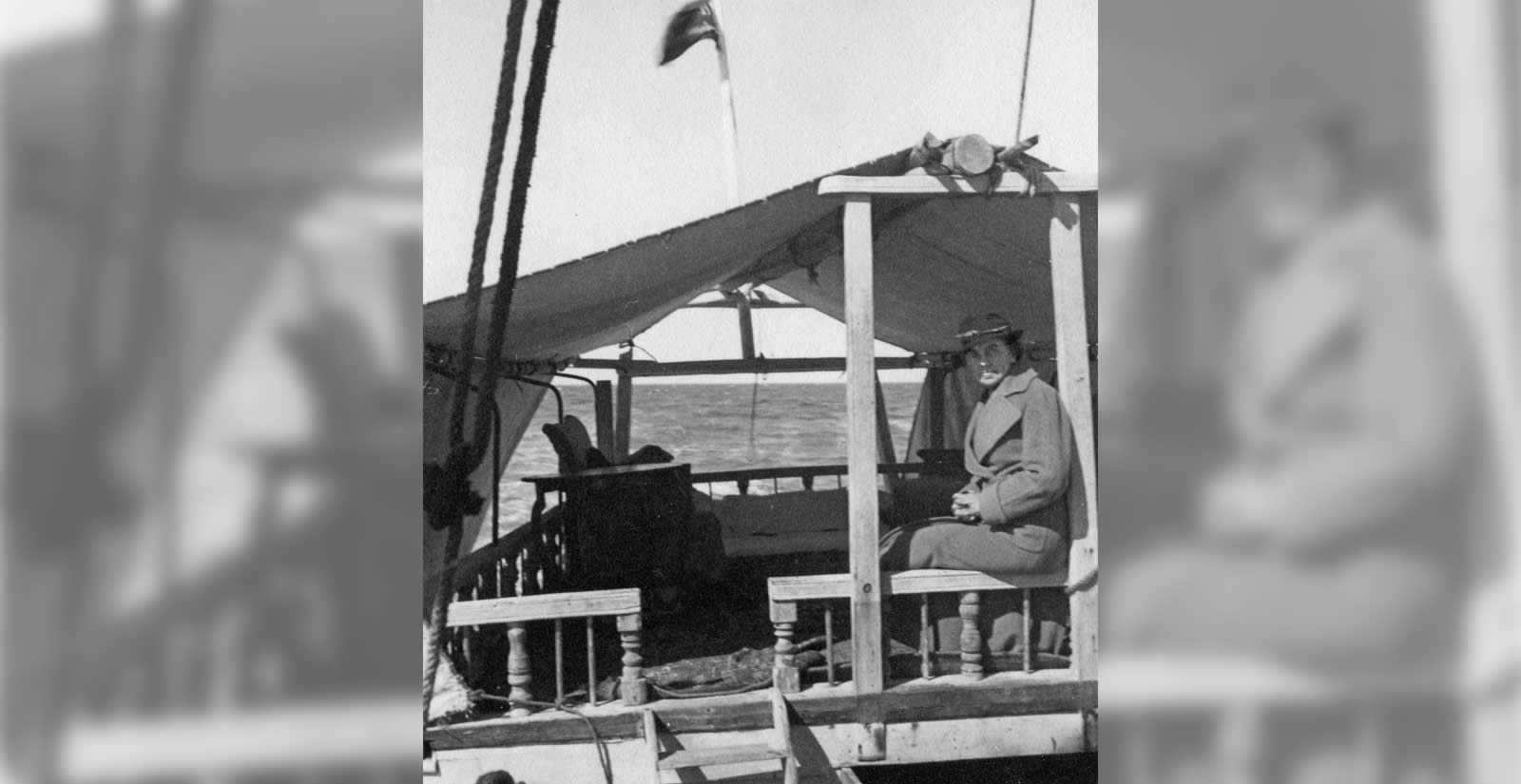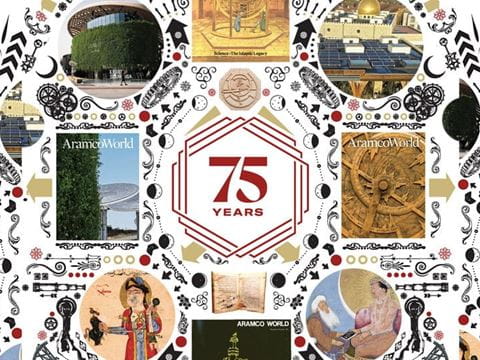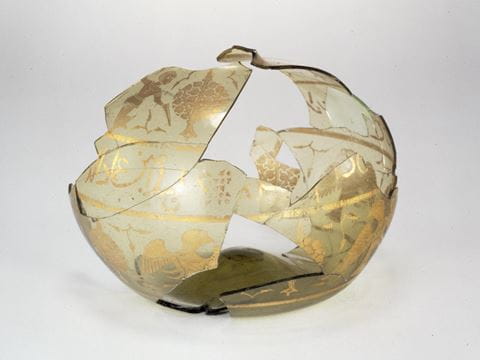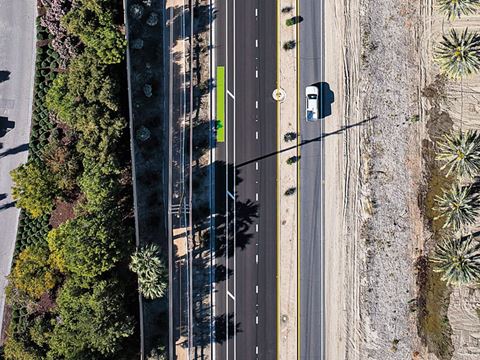
The Arabian Journey of Geraldine Rendel
In 1937 Geraldine Rendel became not only one of the first non-Muslim women to traverse the Kingdom of Saudi Arabia but also, quite possibly, its first tourist. She and her husband, George, a British diplomat, were invited by King Abdulaziz Al Sa`ud, and 83 years later her account is being published for the first time.
While traders, herders, soldiers, pilgrims, travelers and more have crisscrossed the central Arabian Peninsula for thousands of years, it is now possible to identify who was likely the first person to go as a tourist in the modern sense of the word: Geraldine Rendel.

In 1937, at age 52, she accompanied her husband, George, a British diplomat, on a three-week, east-to-west traverse of the five-year-old Kingdom of Saudi Arabia. Along the way, she kept a journal that, though intended originally for publication, remained in her family for 80 years.
She became not only the first Western woman to travel openly across Saudi Arabia as a non-Muslim, but also the first to be received in public by the kingdom’s founder, King Abdulaziz Al Sa’ud, and the first to dine in the royal palace in the capital, Riyadh. Although she had been preceded into central Arabia by a tiny coterie of female travelers—notably Lady Anne Blunt, Gertrude Bell and Dora Philby—unlike them, she was neither a tenacious pioneering female traveler nor on an official mission.
Rather, she went along for the ride. Her purpose was the journey itself. Her account shows her to be a tourist with the decidedly modern attitude in which her personal responses to what she found form as important a part of her narrative as do her descriptions of, and background on, the places and people she encountered.
I stepped off the quay into the boat. ... It was like slipping into another dimension and finding surprisingly that one fitted in.
—Geraldine Rendel
Until the 1930s a journey across the Arabian Peninsula by any foreigner, male or female, was rare. Least frequently visited was the interior region of Najd, where accounts came to the West through the occasional writings of explorers, scholars, political agents, horse-fanciers, English-speaking pilgrims and the occasional soldier, all traveling more on business than leisure. But in the 1930s came the search for oil, quickening modernization and deepening relations with a rapidly interconnecting world.
Diplomats and oil-company representatives came first, aided by the advent of the automobile and wireless telegraphy. With them also came cameras—a part of what became modern tourism in which the Rendels excelled. Both proved keen photographers, and their images, now in the archives of the Royal Geographical Society in London and St Antony’s College in Oxford, rank among the finest from the period.
At the time of the trip, 48-year-old George Rendel was head of the British Foreign Office’s Eastern Department. He had been responsible for Britain’s relations with Saudi Arabia since 1930, and in 1932 it was he who suggested “The Kingdom of Saudi Arabia” as the official name of the newly declared sovereign state.

When King Abd-ulaziz invited him to pay a semiofficial visit combining diplomacy with travel, the king included Geraldine in the invitation. “I could hardly believe my good fortune,” she wrote in the journal’s first pages, noting “Permission to visit Nejd is rarely given to foreigners.” The couple kept a detailed, handwritten diary, some two-thirds of it penned by Geraldine. It was this that she refined into her travelog that languished, probably for diplomatic reasons, unseen until 2017 when her grandson, Jonathan Rendel, offered it to Arabian Publishing in London.
Geraldine played no role in planning the trip that she refers to as her “Arabian holiday,” even though, like the best tourism, it would prove a transformative experience. “In so far as it is the first record of a European woman’s impressions of Riyadh and of this particular crossing of the Central Provinces of Arabia,” she wrote of her travelog, “it may have an interest of its own. For, as a woman, I was privileged to see and do things forbidden to the men who have explored the heart of Arabia.”
Her journal begins on February 21, 1937, outside the southern Iraqi port of Basra in a “frontier post” called al-Zubayr. The Rendels were on their way to Kuwait in a car convoy across the desert “with low thorny scrub not unlike gorse.” From Kuwait they took ship to Bushire, Iran, and from there to Bahrain, arriving on March 3.

Her descriptions of meeting women of al-Gosaibi and Al Sa’ud families afford rare insights into the side of Saudi Arabian life hidden from public view.
From Bahrain, the Rendels boarded a dhow supplied by King Abdulaziz’s agent in Bahrain and al-Hasa (today’s Eastern Province of Saudi Arabia), Abdulrahman al-Gosaibi. Upon reaching the little port of al-‘Uqayr on Saudi Arabia’s east coast—“a mere speck of civilisation, lying between the sea and the sands,” Geraldine noted—they were met by Shaykh Hafiz Wahba, the king’s representative in London. He became “our admirable host, guide, philosopher and friend,” Geraldine recorded.
Such language can be read as an indication of the extent the Rendels were conscious of who they were and where they were going: representatives of the world’s most extensive Western empire invited to travel through the heartland of the only Arab country that had never been subjected to European imperial control. Her tone is correspondingly respectful and unpatronizing.
At the same time, Geraldine also revealed herself a traveler in the romantic mould. Like many European travelers in the East, she proved susceptible to seduction by what she took to be unchanging tradition, the more redolent of The Thousand and One Nights the better, while aspects of modernization and progressive change were often so familiar from home as to be unworthy of comment.


“I stepped off the quay into the boat feeling that adventure had begun,” she wrote upon boarding the dhow for Saudi Arabia. “I was walking right out of my life into another of which I had no real conception … I had passed through a magic door and it had shut behind me setting my fancy free. My everyday world grew dim; it was like slipping into another dimension.”
Even George, a seasoned envoy, reflected similar wonder: “As we left the port at Bahrain … we felt we were passing into another age and another world,” he wrote in his own 1957 memoir, The Sword and the Olive.
From the moment they disembarked in al-‘Uqayr, local dress became obligatory for both. Comprehensively veiled, Geraldine found the experience by turns a nuisance, an acknowledgement of local custom, and a surprisingly welcome screen against unwanted curiosity and, of course, the sun. In a society entirely unaccustomed to the public mixing of women with men, her presence elicited wildly contrasting responses.
“My position all through this journey was a mixture of that of a lady of the harem and of a European woman,” she wrote. “When with the Amir [Crown Prince Saud], I was always … put first in everything. But on some other occasions … I stood without being presented to anyone, and no man would speak to me, or even offer me a chair, because no Nejdi looks at any woman outside his own family circle.”

On the other hand, Geraldine received access to the private quarters of the Saudi elite and the women’s side of society. Her descriptions of meeting the al-Gosaibi women and children and, later, those of Al Sa‘ud in Riyadh and Jiddah afford rare insights into the side of Saudi Arabian life hidden from public view.
As her itinerary unfolded, Geraldine’s enchantment intensified. On reaching Hofuf, about 90 kilometers inland from al-‘Uqayr, she and George were accommodated in comfort in the guesthouse of the palace of Amir Saud Ibn Jiluwi. The ladies of the al-Gosaibi family in Hofuf “looked like figures out of some fine Persian miniature come to life,” she wrote.
Her stay was not without at least one harmless faux pas. The Rendels had arrived after dark, and eager to get a good view of the oasis after breakfast, Geraldine climbed to the palace parapet where she “looked out over a city of flat-roofed houses and little open courts” bordered by the gardens of the oasis and the desert beyond. Rapt by the view, she only slowly became aware of the growing noise from below. One court had filled with “the veiled forms of women and children [who] … looked and pointed upwards towards me, and I realised to my confusion that word had gone round that the foreign lady at the Amir’s Guest House was to be seen on the roof of the Palace.” She dropped out of sight as quickly as she could.
“We turned in, hungry but cheerful; and incredibly, in spite of the roaring of the wind and the rocking of the tent, slept sound.”
Two days later, on their way to Riyadh, the Rendels spent a luxurious night at Crown Prince Saud’s hunting camp in a “romantic tent, which took one straight back to the Golden Age of Arabian history.” One may raise an eyebrow at her preference for the picturesque, reflecting orientalist fantasies, but this was not a prepackaged, sanitized “heritage experience” so common in mass tourism today. She showed true fortitude and open-mindedness in taking off into unknown territory and enduring the discomforts, thrills, spills and frustrations of real desert travel with patience and good humor.
Indeed, the evening before, the Rendels’s car convoy had been caught in a sandstorm and separated from the vehicles carrying food and camp gear. “We were tentless and bedless and foodless,” she wrote. “Our car had only a canvas hood and was rapidly filling with sand and we were getting pretty cold.”
Then the trucks began to arrive. “The kitchen lorry, alas, was still to seek; but a camp bed and shelter from the bitter wind and driving sand was immeasurable relief. We turned in hungry but cheerful; and incredibly, in spite of the roaring of the wind and the rocking of the tent, slept sound.”

The Rendels were devout Catholics, but far from alienating them from their hosts and the people among whom they traveled, their own faith, it turned out, predisposed them to deeper appreciation of the all-pervasive religious outlook of Najdi society. And far from being irritated by relaxed attitudes to schedules, they relished the contrast with their own time-tyrannized lives at home. On the way to Riyadh, George reflected on the tenor of travel in Saudi Arabia, calling it “a strange liberation from the servitudes of European life. … The only fixed points in time are sunrise and sunset and the hours of prayer.”
The group’s halts for prayer en route “won our increasing respect,” he wrote in his memoir, going on to note that many of the Arabs he’d met expressed favor toward those of other faiths over those with none.

In Riyadh the Rendels were received warmly by the crown prince, whom they knew from his visit to London in 1935. As aficionados of traditional architecture, they were thrilled to be accommodated in the height of Najdi style, in the New Palace at al-Badi‘ah, in the nearby Wadi Hanifah. “What a luxury this was after four days with only G.’s small shaving mirror and my own handglass in a dark tent,” wrote Geraldine.
The king himself was away, on the coast in Jiddah, as the pilgrimage season was in full swing at the nearby holy cities of Makkah and Madinah. The meetings the Rendels had with Crown Prince Saud proved both formal and informal. At a private dinner on the last evening, Geraldine was even able to dispense with her veil. The Rendels left Riyadh for Jiddah on March 12 for what was essentially a sightseeing jaunt southwest across the rest of Saudi Arabia. The scenic route took them first past al-Dir‘iyyah, the ancestral home of the Al Sa’ud on the outskirts of Riyadh, and their photographs provide an especially valuable record. This impressive and ruined city was capital of the first Saudi state, from 1744 to 1818, and it is now a restored unesco World Heritage Site and a showcase of new museums and venues for public events.
They continued along the timeworn Hijaz Road, passing through places including al-‘Uyaynah, Marat, Duwadmi, Dafinah and Muwayh, en route to ‘Ashayrah, a wooded area in the Hijaz borderlands used for caravan stops. Next came the highlight: a southward leg to the scenic highland town of Taif and the 2,130-meter Shafa escarpment. There they exchanged cars for horses and donkeys, and—when the sun set before they reached the top—overnighted in a primitive and spectacular escarpment village.


“I couldn’t help wondering what would have happened in an English village in, say, the Lake District, if a train of twenty donkeys, six horses and some forty souls had arrived out of the blue at sundown and proposed to spend the night,” Geraldine wrote. “I am afraid English hospitality would not have stood the test. These folk took it quite as a matter of course … and prepared to kill and roast sheep to feed us all.”
Not only that, but “the best house in the village was placed at our disposal” and “a singsong” staged to honor the couple, with poets riffing to the beat of drums. “Several of [the verses] were about our unexpected arrival in the village. They boasted that they always had bread and coffee for all who might come.”
On March 17 they reached Jiddah, and by then they had traveled some 2,175 kilometers from al-‘Uqayr. As Saudi Arabia’s leading western port, Jiddah was home also to most resident British, American and other foreign representatives. They met nearly all of them, and George discussed political business with King Abdulaziz and Prince (later King) Faisal, the foreign minister.
“It was I who felt at times at a disadvantage and conscious of being somewhat blatant and out of place. … There are points as well as drawbacks to every system.”
With them also in Jiddah was a trio working for Standard Oil Company of California (Socal) that had followed the Rendels across Saudi Arabia in two light Ford cars: Max Thornburg, Fred Davies and Lloyd Hamilton. They proved genial, despite George pouring cold water on their hopes of making a major oil strike in the al-Hasa region where Socal had outbid British rivals in 1933 to win a royal concession to explore for oil. “It is doubtful,” he told them, “whether oil will be found in Hasa in commercial quantities.” He declared the future of Socal’s Saudi subsidiary, the California Arabian Standard Oil Company, “uncertain.” (Less than a year later drillers would make exactly the discovery George had ruled out, changing Saudi Arabia—and the world—forever.)
A high point for Geraldine came when the finance minister, Shaykh Abdullah al-Sulayman, arranged a tea party to introduce her to King Abdul-aziz. She sat next to the monarch—the first occasion on which he had received any European woman in public. Like almost all foreigners who met him, Geraldine was impressed by his charm and charisma:
Presently a stir in the vestibule outside announced the arrival of the King … [who] shook hands with us [and] seated himself on the throne. … From his photographs I had expected someone grim and stern. What I found was a combination of sweetness and strength, for which I was wholly unprepared. I understood how he might be loved as well as feared by his subjects. The large scale of his mind and outlook is at once apparent as he talks. … Like other large-minded men, he seems to bring fresh air into any discussion, to brush away trivialities… [H]e is a man of simple habits; moderate in state, puritan in dress, frugal in food.

When the king “expressed the hope that I had not found the journey too tiring,” Geraldine replied she “had found it of absorbing interest. He answered that he feared it was a poor country, ill-repaying a visit. To this I replied that I should look back on my Arabian journey with the keenest pleasure all my life.”
She went on to visit to the royal harem in the Queens’ Palace. Here, with Prince Faisal and Dr. Midhat Shaykh al-Ard, physician to the royal family, in attendance, she met two of the king’s wives. Um Mansur (mother of Mansur) she described as the king’s “favourite wife,” who “seemed to float rather than walk … with her draperies trailing about her like a figure in a dream.”
The younger Um Talal followed, wearing “a black gold-embroidered deraya. … On their feet they had black patent leather slippers of the English variety known as pumps.” By then Geraldine had made an effort to master some Arabic, but she still needed the two men to interpret. “I expressed my pleasure at meeting,” she recounted, “saying how sadly I had missed the society of my own sex whilst crossing Arabia. At this they laughed, the ice was broken and we talked freely.”

She closes her travelog with reflections on the position of women. While critiquing practices of seclusion and restriction, she also conceded:
Yet they appear happy and give one a real feeling of peace and content. What is more, a sense of dignity; a feeling that they are right with their world and suffer from no sense of inferiority. It was I who felt at times at a disadvantage and conscious of being somewhat blatant and out of place. … There are points as well as drawbacks to every system.
The Rendels left Jiddah on March 22 by sea “with great reluctance” for “our pedestrian life” in London. The poignancy of departure infuses her brief account: “When I gave [butler] Mukhtar a small present as a souvenir of our common experience I think we both had a lump in our throats.”
Like the best tourists, Geraldine felt enlarged by “three weeks of unique experience which had more than justified my most exaggerated hopes.” She signed off her narrative, “My Arabian holiday was over. … As I leaned over the taffrail and looked back across the water to the fast-fading mainland I thought of the widened horizons of time and space and mentally registered a determination—inshallah—to return.”
She never visited the kingdom again. The following year, George was appointed Minister to Bulgaria and, from there, a multitude of increasingly prestigious assignments followed. World War ii broke out in 1939, precluding almost all travel to the kingdom, and Geraldine kept busy in London as the wife of a high-ranking diplomat, deeply active in charitable work as well. She lived to age 81; George to age 90, and her account as “Saudi Arabia’s first tourist,” lives on.
You may also be interested in...

How Ancient Knowledge Shaped Modern Technology
History
Science & Nature
Part 3 of our series celebrating AramcoWorld’s 75th anniversary highlights the magazine’s emphasis on experts and institutions that push the boundaries of present-day knowledge while paying homage to historical figures and writings that paved their way.
History in Objects: 12th-Century Glass Flask an Islamic Golden Age Masterpiece
History
Arts
Golden Vessel From the Islamic Golden Age Reflects Cross-cultural Connections
How California's Date Fruits Became America's Arabian Superfood
Food
History
In recent years in the United States, dates have been trending as a nutrient-dense, easily transportable source of energy. Nearly 90 percent of US-grown dates are from California’s Coachella Valley. Yet the date palm trees from which they are harvested each year aren’t native; they were imported from the Arab world in the 1800s. Over the years, they have become a part of Coachella’s agricultural industry—and sprouted Arab-linked pop culture.